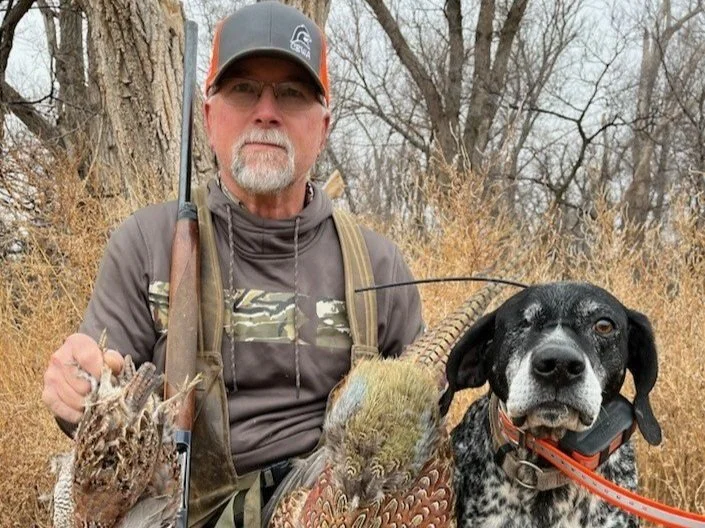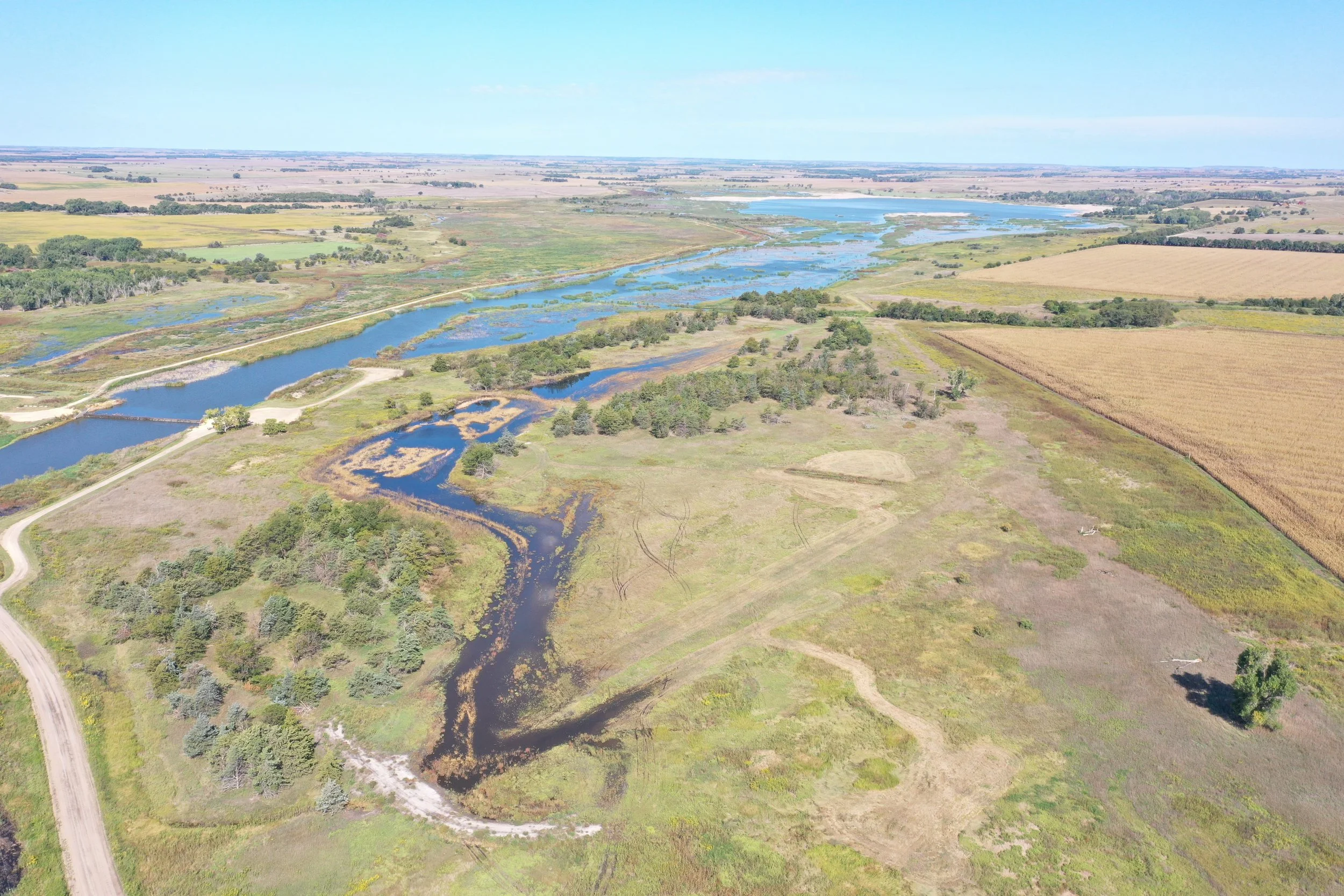Restoring Wetlands – Acre by Acre
By Kent Hensley, Habitat Specialist Manager, KS
Just like temperate grasslands and upland habitat, wetlands are treasured commodities that are continually decreasing on the Kansas landscape. The US Fish and Wildlife Service reports that Kansas has lost over 50% of its original wetland areas. Acre by acre, Pheasants Forever (PF) staff and Kansas Department of Wildlife and Parks (KDWP) Public Land Managers work to return wetland acres to the Kansas landscape.
In April 2025, KDWP Managers Rob Unruh, Matt Farmer and PF Habitat Specialist Brad Whelchel converted a wet meadow, on the Jamestown Wildlife Area that only held water during high rain and flood events. The top end of this meadow was a large borrow pit that was used to construct the county road bridge that splits the two main marshes at Jamestown (Gamekeeper and Gun Club). This borrow pit was deep and always wet, leading to a monoculture of cattails.



KDWP Managers and Habitat Specialist Whelchel placed a water control structure in the natural drainage ditch at the bottom of this wet meadow. They then dug a small drain from the structure to the borrow pit and used dirt from the wet meadow and drainage canal to increase depth. This allowed water to flow out of the wetland for management purposes; and that dirt was used to fill in the deep borrow pit. This simple management application, albeit laborious, increased the wetland size as well as optimum depth for waterfowl use. At full pool, the wetland will be roughly 20 acres in size.
Brad comments, “This project not only provides more opportunities for our constituents on Public Lands, it also will provide yet another place for migrating waterfowl, shorebirds and increases habitat diversity for upland birds. These areas with a wetland upland interface are extremely diverse, where you see moist soil annual plants and grasses alongside common upland forbs and grasses, making these edges magnets for upland birds.”



This project showcases the diverse abilities of PF Habitat Specialists and the on-the-job training opportunities they receive and what KDWP Public Land Managers do day to day. Matt says, “Habitat Specialists and Public Land staff wear a lot of hats, and this is a great project for our PF partners to be involved with. Brad has gained experience with operating, reading survey equipment, setting water control structures and operating large dirt moving equipment. Brad’s background in farming and using some dirt moving equipment has been critical in this project as he has proven to be an excellent equipment operator. This project is a great example of how partnerships benefit Kansas wildlife constituents, PF members and the wildlife of Kansas for generations to come.”
UPDATE: The vegetative pictures from July 2025 demonstrate that with the right conditions, just how fast successional changes can take place and provide more usable space for aquatic species and transitional edge for terrestrial species!





